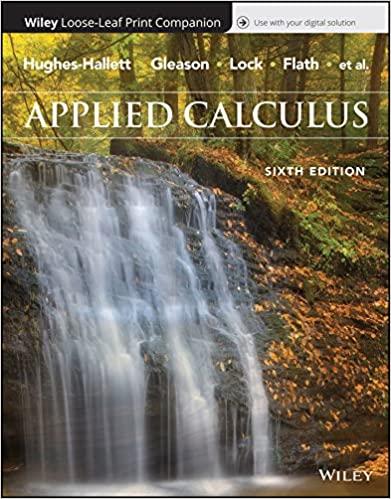(a) Use a calculator or computer to find 6 0 (x 2 +1) dx. Represent this...
Question:
(a) Use a calculator or computer to find ∫60 (x2 +1) dx. Represent this value as the area under a curve.
(b) Estimate ∫60 (x2 +1) dx using a left-hand sum with n = 3. Represent this sum graphically on a sketch of f(x) = x2 + 1. Is this sum an overestimate or underestimate of the true value found in part (a)?
(c) Estimate ∫60 (x2 +1) dx using a right-hand sum with n = 3. Represent this sum on your sketch. Is this sum an overestimate or underestimate?
Fantastic news! We've Found the answer you've been seeking!
Step by Step Answer:
Related Book For 

Applied Calculus
ISBN: 9781119275565
6th Edition
Authors: Deborah Hughes Hallett, Patti Frazer Lock, Andrew M. Gleason, Daniel E. Flath, Sheldon P. Gordon, David O. Lomen, David Lovelock, William G. McCallum, Brad G. Osgood, Andrew Pasquale
Question Posted:





